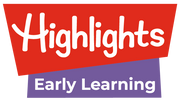The Hidden Power of Transitions: How to Turn Everyday Moments Into Learning
Experienced preschool teachers know something that’s often invisible to those outside the classroom: some of the richest learning happens in the in-between moments. Lining up. Washing hands. Moving from circle time to centers. Putting on coats.
Developmental research backs what great teachers already know: predictable routines and well-designed transitions support core skills like self-regulation, executive function, language development, and social-emotional growth. According to studies from the Center on the Developing Child at Harvard University, executive function skills — like remembering steps, switching gears, and practicing self-control — are built not just during “big” moments of instruction but during repeated, structured experiences woven throughout the day. Transitions offer exactly that — natural, recurring opportunities to help children practice focus, follow multi-step directions, and engage in cooperative behaviors.

To the untrained eye, transitions might look like “filler time.” But to early childhood educators, they’re an essential part of how young children learn to regulate, focus, and participate in a shared community. When used intentionally, transitions can reinforce core developmental skills without adding anything extra to the day.
1. Build Language During Lining Up
Lining up isn’t wasted time. It’s a natural moment to build language. Rhymes, quick word games, and call-and-response songs keep children engaged while strengthening vocabulary, listening, and early literacy skills.
2. Strengthen Executive Function Through Routines
Consistent transition rituals help children develop working memory, flexible thinking, and self-control. For example, a structured three-step cleanup routine (sing, sort, push in chairs) teaches them to follow multi-step directions and builds responsibility for shared spaces.
3. Add Movement and Music
Young children learn with their whole bodies. Integrating movement — marching, tiptoeing, silly walks, dancing — helps reset their energy and regulate attention, creating smoother, calmer transitions.
4. Reinforce Social Skills and Manners
Everyday moments like handwashing or getting ready to go outside are opportunities to practice kindness, patience, and cooperation. A simple prompt like “Can you help a friend zip their coat?” turns a routine step into a social learning moment.
5. Use Predictable Rituals to Build Security
Predictable transitions help children feel safe and oriented in their day. Over time, these rituals become internalized, supporting self-regulation and independence. Even something as simple as a consistent cleanup song gives children a reliable cue that helps the whole class flow more smoothly.
In early childhood education, there is no wasted time. Every moment has the potential to build skills and shape how children experience learning. When teachers approach transitions with intention, they transform the smallest parts of the day into some of the most powerful.
About the Author

Laureen Reynolds is Highlights Early Learning's Director of Product and a former preschool teacher.

